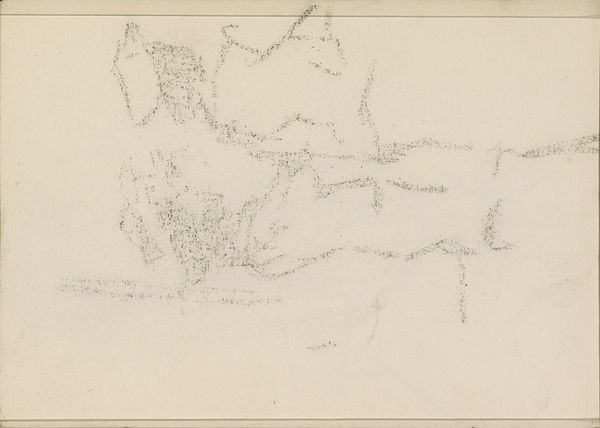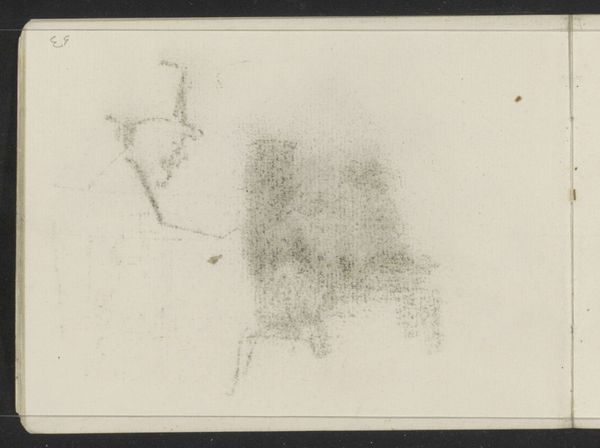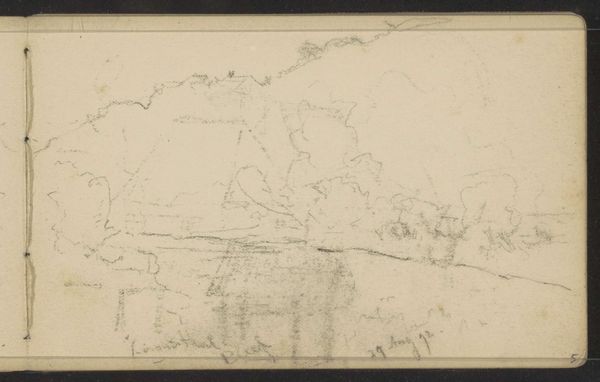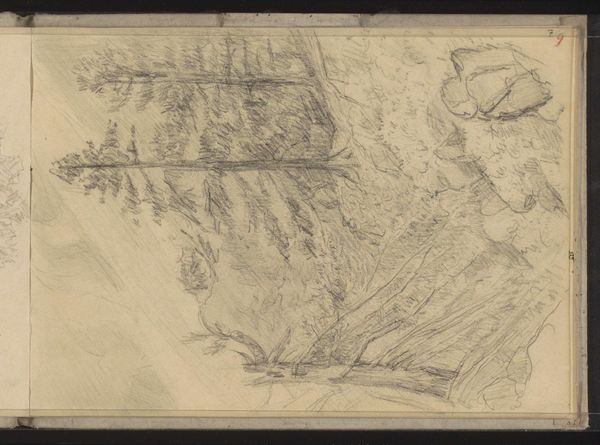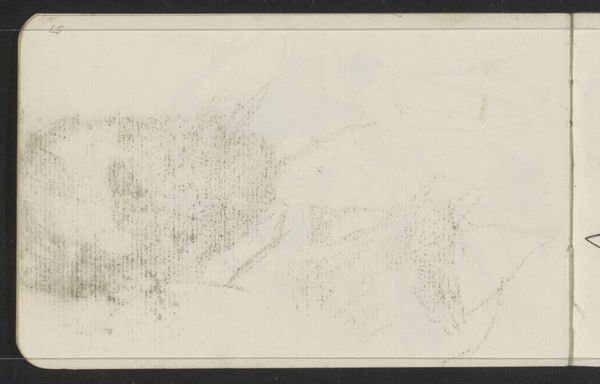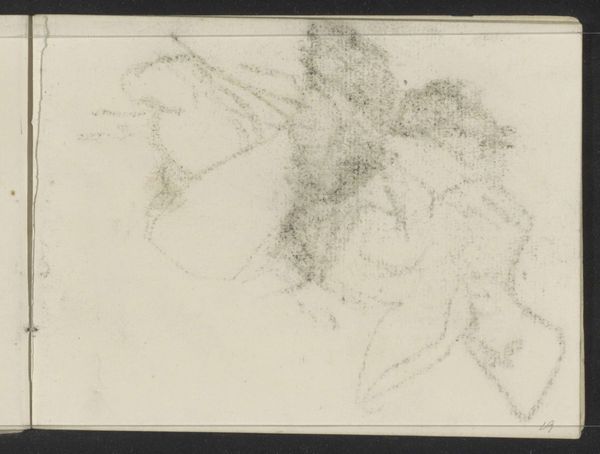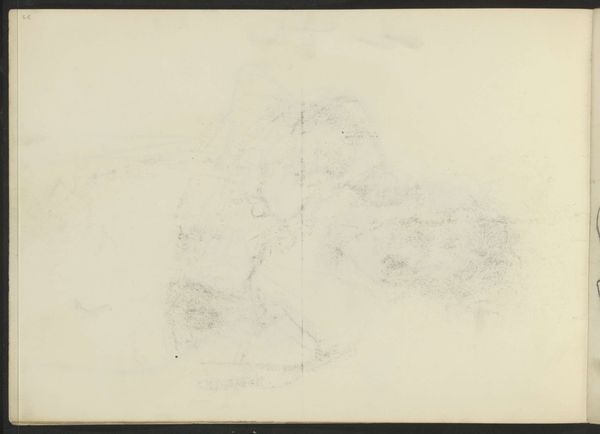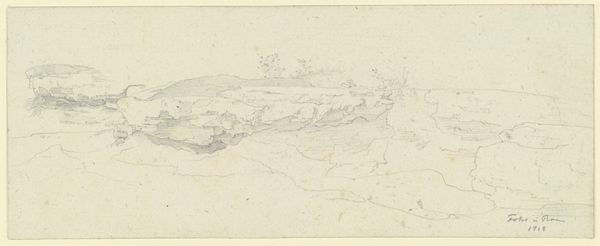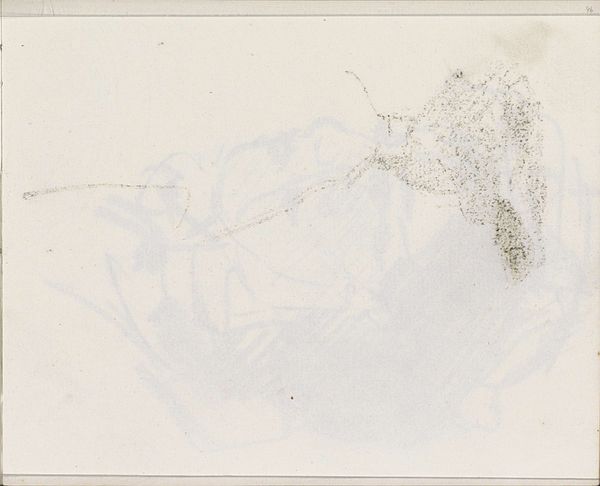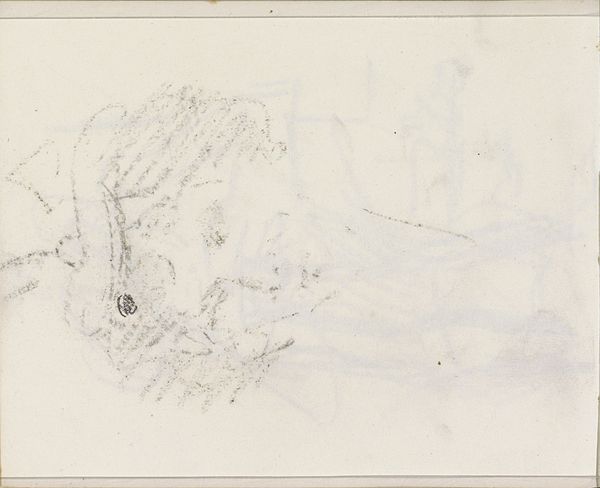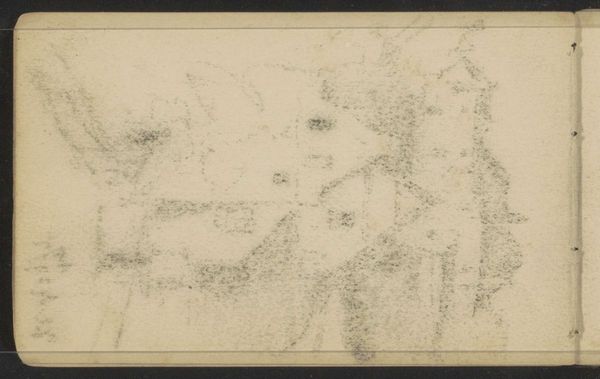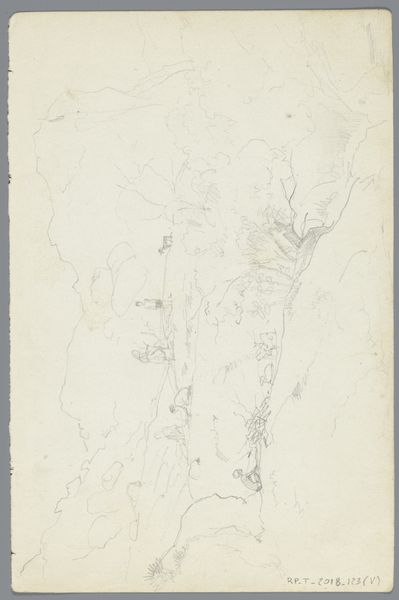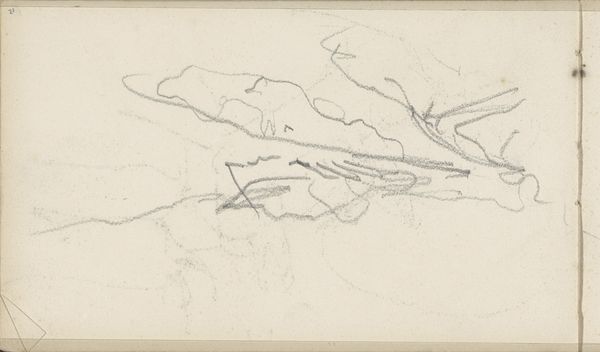
Copyright: Rijks Museum: Open Domain
Curator: What an intriguing piece. This is "Abklatsch van de krijttekening op blad 17 verso," a drawing by Isaac Israels, likely created between 1875 and 1934. It’s part of the Rijksmuseum's collection and done with pencil, graphite, and crayon on paper. Editor: My first impression is a sense of faded memory. The sketchiness, the delicate lines, it's as if we're glimpsing something ephemeral, just barely held on the page. Curator: Exactly. Israels, during that period, was deeply engaged with capturing fleeting moments of daily life, particularly scenes of leisure and portraits. His involvement with Impressionism meant documenting modernity but also reflecting it via societal changes in how subjects are framed or made. Editor: You can certainly feel the Impressionistic influence in the quick, almost gestural lines. Look at the use of shading—how Israels suggests form with those dense patches of graphite. I wonder about the implications of reproducing a "krijttekening," that is chalk drawing, here as graphite. It feels inherently removed and distant. Curator: "Abklatsch" itself indicates a transfer or a rubbing, meaning this isn’t the original drawing but an impression taken from it. This reflects Israels’ broader interest in reproductive media and its impact on how art was perceived, disseminated, and valued. It also served as an exploration into ways to document and preserve preliminary studies. Editor: The composition, too, with that void on the left side really draws focus to the cluster of lines that define the face. A rather minimal portrait emerges from it, almost as an emergent figure coming to life from those hatched scribbles. It's incomplete, somehow longing. Curator: It echoes Israels’ socio-political sphere during a turbulent epoch. His willingness to engage the impressionistic and capture modernity made art accessible to audiences far beyond royal circles. In this work we see his approach translated across his body of sketches where subjects come and go as ephemeral subjects within his larger project. Editor: Thinking about its physical form as a transfer or "rubbing," almost a relic preserved of another piece altogether. In that, the "verso" named in the title takes on significance—a sketch of a sketch, and, like memory itself, faded and spectral. Curator: Indeed. Israels' choice to preserve even these fleeting impressions speaks volumes about his vision. And in that he helps document Dutch society while allowing people from the fringes to speak. Editor: Seeing it from that perspective, it really opens up new avenues to understanding the work—moving past the initial sketch. Curator: Absolutely. Israels created complex socio-political images via quick pencil sketches which make him, in my opinion, such an appealing subject of study.
Comments
No comments
Be the first to comment and join the conversation on the ultimate creative platform.
